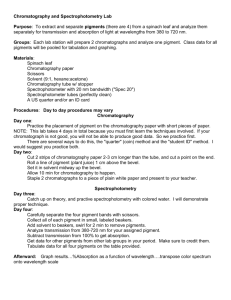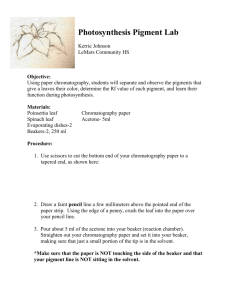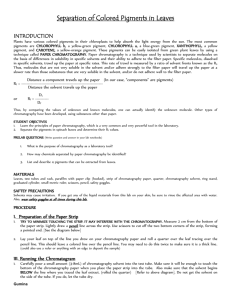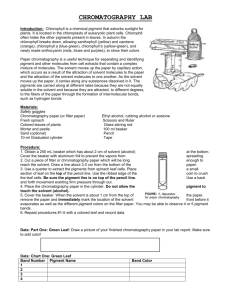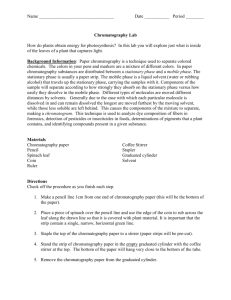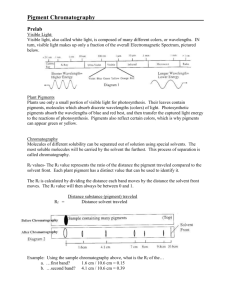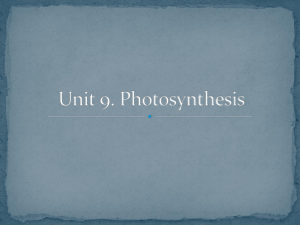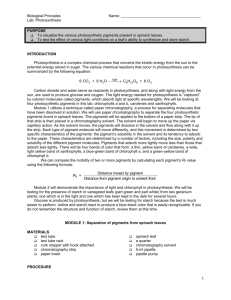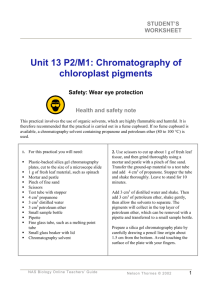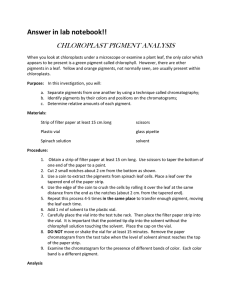INVESTIGATING THE RATE OF PHOTOSYNTHESIS as influenced by
advertisement
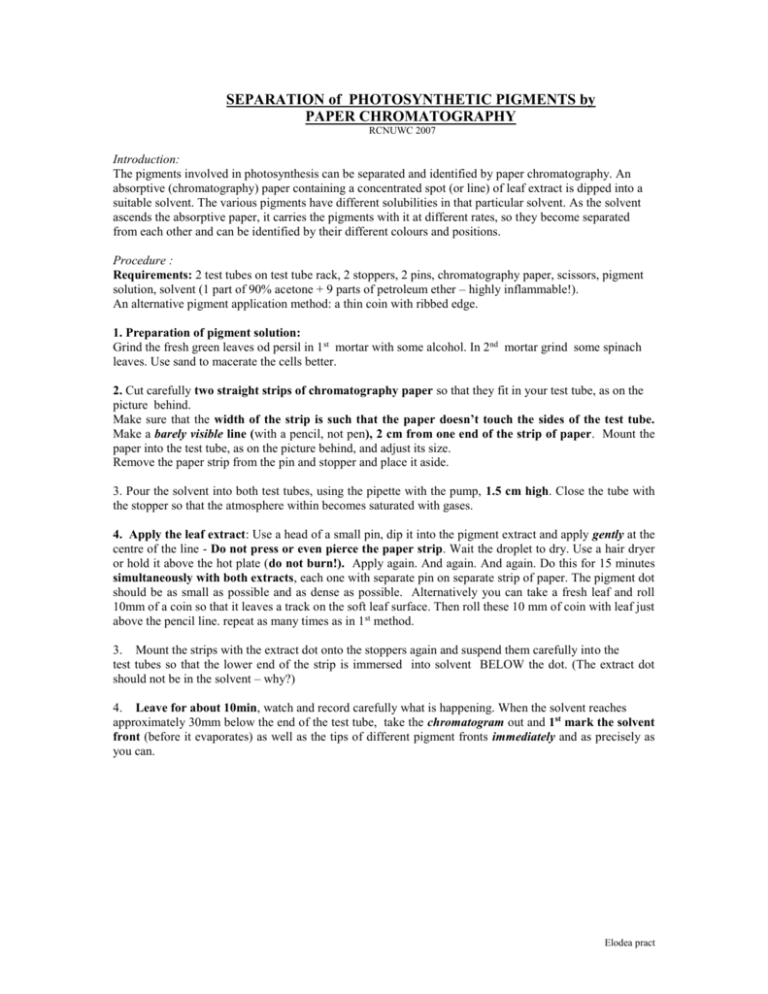
SEPARATION of PHOTOSYNTHETIC PIGMENTS by PAPER CHROMATOGRAPHY RCNUWC 2007 Introduction: The pigments involved in photosynthesis can be separated and identified by paper chromatography. An absorptive (chromatography) paper containing a concentrated spot (or line) of leaf extract is dipped into a suitable solvent. The various pigments have different solubilities in that particular solvent. As the solvent ascends the absorptive paper, it carries the pigments with it at different rates, so they become separated from each other and can be identified by their different colours and positions. Procedure : Requirements: 2 test tubes on test tube rack, 2 stoppers, 2 pins, chromatography paper, scissors, pigment solution, solvent (1 part of 90% acetone + 9 parts of petroleum ether – highly inflammable!). An alternative pigment application method: a thin coin with ribbed edge. 1. Preparation of pigment solution: Grind the fresh green leaves od persil in 1st mortar with some alcohol. In 2nd mortar grind some spinach leaves. Use sand to macerate the cells better. 2. Cut carefully two straight strips of chromatography paper so that they fit in your test tube, as on the picture behind. Make sure that the width of the strip is such that the paper doesn’t touch the sides of the test tube. Make a barely visible line (with a pencil, not pen), 2 cm from one end of the strip of paper. Mount the paper into the test tube, as on the picture behind, and adjust its size. Remove the paper strip from the pin and stopper and place it aside. 3. Pour the solvent into both test tubes, using the pipette with the pump, 1.5 cm high. Close the tube with the stopper so that the atmosphere within becomes saturated with gases. 4. Apply the leaf extract: Use a head of a small pin, dip it into the pigment extract and apply gently at the centre of the line - Do not press or even pierce the paper strip. Wait the droplet to dry. Use a hair dryer or hold it above the hot plate (do not burn!). Apply again. And again. And again. Do this for 15 minutes simultaneously with both extracts, each one with separate pin on separate strip of paper. The pigment dot should be as small as possible and as dense as possible. Alternatively you can take a fresh leaf and roll 10mm of a coin so that it leaves a track on the soft leaf surface. Then roll these 10 mm of coin with leaf just above the pencil line. repeat as many times as in 1 st method. 3. Mount the strips with the extract dot onto the stoppers again and suspend them carefully into the test tubes so that the lower end of the strip is immersed into solvent BELOW the dot. (The extract dot should not be in the solvent – why?) 4. Leave for about 10min, watch and record carefully what is happening. When the solvent reaches approximately 30mm below the end of the test tube, take the chromatogram out and 1st mark the solvent front (before it evaporates) as well as the tips of different pigment fronts immediately and as precisely as you can. Elodea pract There are two ways to identify different pigments: using their relative position and observing their colour. The relative position of the pigments is expressed as their Rf value. Rf = a/b distance moved by the particular pigment from its original position (a) distance moved by solvent from the same position (b) 5. Calculate the Rf values for each pigment on both of your chromatograms. Identify the pigments! IMPORTANT: each student should have their own two chromatograms and THEY MUST BE GLUED TO THE LAB REPORT ) IB criteria assessed: DC, DPP, CE, MS Elodea pract
